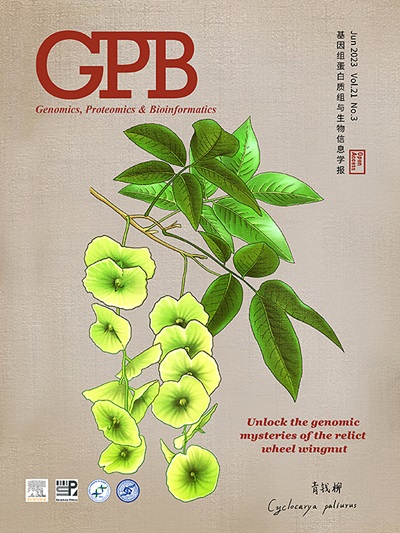莱茵衣藻有性生殖过程中n6 -甲基腺苷修饰的特征。
IF 7.9
2区 生物学
Q1 GENETICS & HEREDITY
引用次数: 0
摘要
单细胞绿藻莱茵衣藻(Chlamydomonas reinhardtii,以下简称Chlamydomonas)具有植物和动物的双重属性,是研究光合作用、有性繁殖和生命周期等基本过程的理想模式生物。n6 -甲基腺苷(m6A)是最常见的mRNA修饰,在动植物有性生殖过程中起着重要作用。然而,衣藻有性生殖过程中m6A修饰的模式和功能尚不清楚。在这里,我们对衣藻生命周期有性繁殖不同阶段的6个样本进行了转录组和甲基化RNA免疫沉淀测序(MeRIP-seq)分析。结果表明,在衣藻mrna中,m6A修饰经常发生在DRAC的主基序(D = G/A/U, R = A/G)上。此外,衣藻mrna中的m6A峰主要富集在3′非翻译区(3′UTRs),且与各阶段转录本丰度呈负相关。特别是微管相关通路相关基因的m6A表达水平与m6A表达水平呈显著负相关,说明m6A修饰通过调节微管为基础的运动影响衣藻的有性生殖和生命周期。综上所述,我们的研究结果首次揭示了m6A修饰在衣藻mrna中的分布和功能,并为其他植物生物有性生殖过程中m6A修饰的进化提供了新的见解。本文章由计算机程序翻译,如有差异,请以英文原文为准。
Characteristics of N6-methyladenosine Modification During Sexual Reproduction of Chlamydomonas reinhardtii
The unicellular green alga Chlamydomonas reinhardtii (hereafter Chlamydomonas) possesses both plant and animal attributes, and it is an ideal model organism for studying fundamental processes such as photosynthesis, sexual reproduction, and life cycle. N6-methyladenosine (m6A) is the most prevalent mRNA modification, and it plays important roles during sexual reproduction in animals and plants. However, the pattern and function of m6A modification during the sexual reproduction of Chlamydomonas remain unknown. Here, we performed transcriptome and methylated RNA immunoprecipitation sequencing (MeRIP-seq) analyses on six samples from different stages during sexual reproduction of the Chlamydomonas life cycle. The results show that m6A modification frequently occurs at the main motif of DRAC (D = G/A/U, R = A/G) in Chlamydomonas mRNAs. Moreover, m6A peaks in Chlamydomonas mRNAs are mainly enriched in the 3′ untranslated regions (3′UTRs) and negatively correlated with the abundance of transcripts at each stage. In particular, there is a significant negative correlation between the expression levels and the m6A levels of genes involved in the microtubule-associated pathway, indicating that m6A modification influences the sexual reproduction and the life cycle of Chlamydomonas by regulating microtubule-based movement. In summary, our findings are the first to demonstrate the distribution and the functions of m6A modification in Chlamydomonas mRNAs and provide new evolutionary insights into m6A modification in the process of sexual reproduction in other plant organisms.
求助全文
通过发布文献求助,成功后即可免费获取论文全文。
去求助
来源期刊

Genomics, Proteomics & Bioinformatics
Biochemistry, Genetics and Molecular Biology-Biochemistry
CiteScore
14.30
自引率
4.20%
发文量
844
审稿时长
61 days
期刊介绍:
Genomics, Proteomics and Bioinformatics (GPB) is the official journal of the Beijing Institute of Genomics, Chinese Academy of Sciences / China National Center for Bioinformation and Genetics Society of China. It aims to disseminate new developments in the field of omics and bioinformatics, publish high-quality discoveries quickly, and promote open access and online publication. GPB welcomes submissions in all areas of life science, biology, and biomedicine, with a focus on large data acquisition, analysis, and curation. Manuscripts covering omics and related bioinformatics topics are particularly encouraged. GPB is indexed/abstracted by PubMed/MEDLINE, PubMed Central, Scopus, BIOSIS Previews, Chemical Abstracts, CSCD, among others.
 求助内容:
求助内容: 应助结果提醒方式:
应助结果提醒方式:


